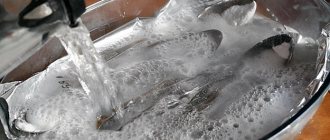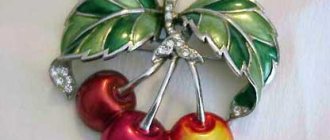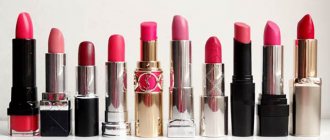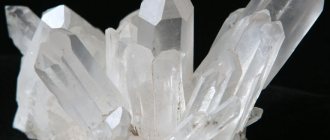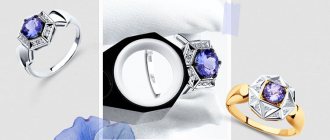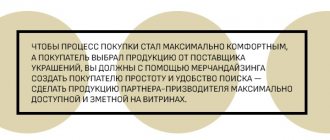03/07/2017 Ivan Korabelnikov 0 comments
Silver is one of the most popular precious metals. It is an excellent alternative to many other materials. Often, silver products are chosen by those who do not like gold. And this is a great option.
When purchasing various silver jewelry, be prepared that these items may not only turn black, but also turn yellow. Why is this happening? There can be more than enough reasons. We will talk about this and much more in more detail in this article.
It is very important to properly care for these jewelry at home to prevent damage to these items. But more on that later. First, let's find out what are the main reasons why such a noble and precious metal as silver begins to turn yellow.
Why does silver turn yellow?
What to do if silver has turned yellow over time? Pure silver reacts very sensitively to sulfur, and if there are compounds with this chemical element in the humid air, then a coating - silver sulfide - forms on the product. It has a yellow tint. And since sulfur compounds are used quite widely - in store windows, in the food industry, and also in the textile industry - to remove chlorine after bleaching, the yellowing of your jewelry is understandable.
- The yellow color may be a consequence of the formation of a film during the chemical reaction of our noble metal with bromine and iodine.
- Rhodium may be another cause of yellowing. This white metal is used to coat silver and white gold items. Rhodium practically does not react with anything and, based on this, reliably protects the surface of the jewelry. And since the material is very expensive, the coating is very thin - over time it wears off and then the decoration reacts with elements that “cause” it to turn yellow.
- Silver of lower grades is characterized by an admixture of copper, which is more inert, so such products quickly lose their shine and turn yellow.
Important! Don't be alarmed if your silver jewelry, cross and chain, or cutlery suddenly turns yellow. It is possible to clean silver from yellowness, using improvised means.
If the silver has turned yellow
Regular silver, as it should be sold in stores, is white. Some time after the purchase, we discover that our silver has turned yellow, and we cannot understand why or what to do in this case. This article does not concern those situations when we initially, knowingly for us, bought a yellow alloy of silver with a high proportion of copper or other metals, because a lot has been written about these cases, and when it comes to the yellow color of the corresponding alloys. This article is devoted to those situations when we are sure and definitely remember that we bought silver of the traditional white color, and after some time: either immediately after the purchase, or a year later, it suddenly turned yellow - either gradually or sharply .
Methods for cleaning silver
There are many methods to remove yellowness from silver. Let's look at the simplest and most effective ones.
Method 1
- Take toothpaste or tooth powder.
- Apply it to a toothbrush with not very stiff bristles so as not to scratch the jewelry.
- Clean the product with a brush.
- Rinse it well with water and dry it with a cloth.
Method 2
If your jewelry has a complex pattern or is a chain, it is difficult to clean using the previous method. Better use the following algorithm:
- Place 2-3 cups of water in a saucepan.
- Bring it to a boil.
- Without turning off the heat, add 1 tbsp to the water. l. soda
- Dip the product into boiling water several times.
- Wipe with a dry soft cloth.
Method 3
If you don’t want or don’t have time to bother with boiling, then use this method:
- Take cotton wool and ammonia.
- Wipe the silver.
Important! There is no need to wipe the jewelry after such cleaning.
Method 4
A very homemade and simple way to quickly clean silver from yellowness:
- Pour 1-2 teaspoons of baking soda into your palm.
- Place your decoration there.
- Use your fingers or a cotton swab to rub the product with baking soda.
- Rinse with water and dry with a cloth.
Method 5
- Take a cup and put some food foil on the bottom.
- Pour 2 tsp into a container. soda and pour boiling water.
- Place the product in the mixture for 3-5 minutes.
- Remove the clean, white jewelry and dry it gently with a soft cloth.
Important! For gold-plated silver, do not use abrasive substances. Simply soak a flannel cloth in vinegar or denatured alcohol and wipe it down. You can also use turpentine and wine alcohol.
Method 6
Special cleaning products will help remove yellowness from silver if it has acquired a pronounced tint. Examples of such means are:
- German Dipping Bath for Silver;
- its Italian counterpart Silbo;
- the most effective domestic product is FLURE.
Important! To remove yellow tarnish from silver, simply follow the instructions on the package.
Video material
Using our tips for cleaning silver from yellowness, you will preserve the beautiful appearance of your jewelry, which means you will be in a good mood while using it.
Silver is one of the most popular precious metals. It is an excellent alternative to many other materials. Often, silver products are chosen by those who do not like gold. And this is a great option.
When purchasing various silver jewelry, be prepared that these items may not only turn black, but also turn yellow. Why is this happening? There can be more than enough reasons. We will talk about this and much more in more detail in this article.
It is very important to properly care for these jewelry at home to prevent damage to these items. But more on that later. First, let's find out what are the main reasons why such a noble and precious metal as silver begins to turn yellow.
Silver color rhodium plating method
The galvanic method is used in the manufacture and restoration of exclusive jewelry; in some cases, rhodium plating with a thickness of 0.1-25 microns is applied to individual elements of earrings, bracelets and chains made of 925 .
Rhodium is a precious metal with properties similar to platinum; a layer several microns thick protects the silver alloy from external factors and mechanical damage. Rings, bracelets, and chains made of rhodium-plated precious metal are characterized by a bright steel luster.
The main factors of yellowing of silver products
Silver belongs to the precious metals, it is included in the group of noble ones, along with many others. These jewels have been known to mankind for several millennia.
During all this time, the most observant people managed to notice that metals do not corrode, do not become covered with a coating of different colors after exposure to alkalis, acids, etc.
Such properties of jewelry are explained quite easily: the presence of high resistance to chemical influences of the environment. Therefore, the reasons why silver begins to turn yellow lie far from the surface. Why does silver turn yellow? The main factors that provoke the development of yellowness in silver items include the following:
- release of sulfur in the air from those items that are made from special rubber. This includes various rubberized capes, boots, seals in kitchen furniture, windows and doors, etc.;
- sulfur compounds in packaging paper, cardboard, clothing, these substances are subsequently not removed in any way and, having firmly settled in the room, begin to be released and provoke the development of a yellow tint in precious silver items;
- sulfur and sodium thiosulfate come into contact with each other. The latter component is actively used in the food industry as a complexing agent and oxidizing agent. It is also used to remove bleach from cotton in the textile industry;
- medications that contain bromine, iodine, as well as various cosmetics, household chemicals, building materials and other things;
- exposure to sulfur compounds. When mixed with rain or water, sulfur-based acids can occur, which negatively affects silver items;
- waste emissions from industrial enterprises, man-made sources spreading in the air also provoke the development of a yellow tint in silver;
- Another reason that silver begins to turn yellow is the state of human health. Excretions (sweat, breath, etc.) of the human body also contribute to the appearance of a yellow tint;
- yellowed products may not be made of silver, but of an alloy - that is, you can purchase a fake made of copper and bronze. To exclude this option, you can conduct an examination of products that have changed color. This does not take long to do and at the same time is inexpensive.
Under the influence of negative factors, silver first begins to turn yellow, and then acquires a darker shade, ultimately turning into a black material. It is very difficult to get rid of this plaque later, so it is recommended not to start the oxidation process.
Types of alloys for specific silver products
Today, in addition to copper, zinc, germanium, platinum and even silicon are added to the silver alloy. This allows you to influence the color of the ligature material, but the main thing is to more reliably protect it from oxidation. Yellow silver is a typical example. The appearance of the products is greatly spoiled by the metal oxidation process. The rhodium plating method, when a silver item is coated with a thin layer of rhodium, helps to resist oxidation. In addition to protection from mechanical damage and corrosion, the jewelry acquires a characteristic shine.
It has become traditional in world practice to use certain types of alloys for the manufacture of specific objects and products. For expensive jewelry with filigree, it is customary to use 960 alloy. Silverware and decorative serving items, often coated with enamel, contain an alloy. The most common is silver alloy. These include jewelry, table setting items, all kinds of figurines and entire exhibitions.
Designers boldly use yellow silver in combination with other metals
. When making yellow silver jewelry, the artist strives to achieve different shades of color. Therefore, in alloys the percentage of the alloying component - copper - changes. The more copper in the alloy, the more yellow the shade of the metal in the products.
The yellow tint of silver changes to a slightly reddish color when the copper content reaches 50%. This property of the silver alloy is used by jewelry makers in their work.
Many fashionistas and just people who allow themselves to have beautiful jewelry from recognized master jewelers prefer elite 925 silver. In appearance it is difficult to distinguish it from 960 standard metal. But it is more practical when wearing and using jewelry made on its basis. Connoisseurs have long considered dining room to be the best. Again, practicality in use attracts attention: it retains its shape perfectly and does not change its appearance when in contact with food.
Jewelry made from silver alloys is more durable than gold, and rhodium plating ensures the pristine beauty of the product for many years. Numerous designer collections use combinations of white, yellow and reddish-pink shades of silver in their jewelry. This makes each work a work of art.
It should be noted that low-grade varieties of yellow silver are actively used in industry, in particular, electrical engineering and electronics. The rapid growth of China's industry has led to the fact that this country has taken first place in the world in industrial consumption of this type of metal. Many leading companies in the world prefer to manufacture electrical and radio-electronic products under their own brand in the Middle Kingdom, hence the demand.
Samples from 720 to 830 have a fairly high copper content in their composition and are prone to oxidation. Nevertheless, parts coated with such metal work in oily environments for quite a long time and are in demand in mechanical engineering both in Russia and in other countries of the world.
Jewelry is no longer perceived only as an addition to an image. Sometimes they themselves dictate what dress to wear or what shoes to choose. For some, jewelry is a kind of investment, for others it is a memory of those who gave the product or wore it previously. Certain tastes have already developed in the world. Some argue that there is no metal more valuable than gold. People who hold the opposite opinion defend the virtues and charms of silver. Perhaps there would be much more fans of the second metal if it were not for the special care that it requires. Without them, you will be faced with the question of why silver turns yellow. There are both completely logical reasons and explanations for this, as well as mystical ones associated with various signs.
Pure metals do not turn yellow
It is worth noting that only pure metals, which are produced in special factories that carry out complete cleaning of products, are not subject to yellowing. Thus, various foreign impurities in such products are minimal. Often there are only a few grams per kilogram.
This is all good, of course, but despite the fact that these products do not turn yellow, they have another more significant drawback - low strength. In this regard, manufacturers use alloys of several metals at once, for example, silver with platinum, gold, nickel and other components.
This composition of silver increases its mechanical characteristics, polishing stability, etc. Thanks to the composition used, it is possible to achieve the desired shade of jewelry, but this is a very controversial issue.
Why improve one quality in order to worsen another? After all, it is not known what is even better. The more other metals in the alloy - nickel, zinc and others - the faster the jewelry will become covered with a coating, which is then not so easy to clean.
How the color of silver jewelry depends on the sample
The shade of yellow is characteristic of low-grade jewelry made from alloys of silver and copper; the shade depends on the percentage of components. The amount of noble metal is judged by the sample - the higher it is, the lighter, more fragile, and more expensive the product.
Cheap rings, chains, and bracelets made of 720 silver are yellow in color; they oxidize quickly. Silver alloys 916, 925, 960 are considered high-grade; fashion accessories and jewelry are made from them.
Rhodium-plated jewelry does not cause allergies
For the production of decorative elements and tableware, alloys of 750, 800, 875 are used. Products made of gilded silver are not subject to a separate test for gold. The mark on a ring, earrings or bracelet reflects the amount of base metal (Ag) in the alloy.
How to care for silver items to avoid yellowing?
Every owner of silver jewelry dreams that her wealth will retain its former shine, color and beauty for as long as possible. Is it possible to do this yourself, at home, without spending a lot of money? It’s quite possible if you take proper care of your silver items and follow a few simple rules.
- Put all silver items in their place, store them in special boxes (preferably made of wood) so that they do not lie anywhere. It would be ideal if the chosen silver jewelry box closes tightly and contains cotton or linen inside.
- To store silver items, you can also use special bags with a zipper, which are very common today; they can be bought at any jewelry store.
- If you do not plan to use silver items for a long time, then it is better to provide them with special storage conditions: wrap them in special paper, wrap them as tightly as possible to prevent air from getting into the jewelry.
- After you use your silver item, be sure to wash it in warm water and soap, or better yet, baking soda. You can use brushes with soft bristles to avoid scratching the surface of the product. Dry each piece with a napkin or towel so that the chain does not dry out on its own. Place the dry silver in the box (see recommendations above). To prevent yellowing, we also recommend that you wipe your silver items daily with a flannel cloth.
Basic methods for cleaning yellowed silver
So, how can you effectively clean your silver if it suddenly turns yellow? The most popular techniques include several methods.
- Place all yellowed products in a stainless container; enamel dishes are quite suitable. Pour baking soda over them; you don’t have to pour out the whole pack so that the jewelry is completely covered in soda. After this, fill them with boiling water completely. You must wait until the water cools down. After this, rinse the items with clean water and dry them with a napkin.
- Many people resort to another popular method of cleaning silver - rubbing it with toothpaste. This technique is very common; many people have probably used it. The main thing is not to overdo it in your efforts and not to rub cracks and scratches on the jewelry. To clean, you can use a simple toothbrush with toothpaste applied to it.
- Use GOI paste, apply it to a woolen cloth and gently rub the silver item. After this, wash the silver in warm soapy water. If the yellow spots have not disappeared, you can repeat this procedure. Instead of GOI paste, you can use lipstick, but do not forget about the grease-removing rinse.
- Another popular recipe is to use a slurry made from soda and water in the following proportions: mix 500 ml of warm water with 2 tablespoons of soda. In this case, you need to put foil in the container in which this mixture is prepared. Products are dipped in this composition. You need to wait a few minutes, and then thoroughly wash the jewelry with clean water and be sure to wipe it dry.
- You need to take soda, add water to it to make a paste and wipe the silver product well. Or take a container, line the walls and bottom with foil, pour 0.5 liters of water at 70-80 degrees, add 1-2 tbsp. spoons of soda. Dip the silver for a few minutes. Then rinse and dry. This method shows how to clean silver with foil.
In addition to the methods described above, citric acid, ammonia, table vinegar, and nail polish remover, preferably alcohol-based, are suitable for cleaning silver from yellow stains.
Using these tools, you will not waste a lot of free time and money. It's very simple and cheap.
Now you know why silver items turn yellow and how to deal with it. Be careful with your jewelry and always take proper care of it. Then you will not have any problems with silver jewelry changing color.
Man's acquaintance with silver goes back thousands of years: the noble metal was mined and used in states that existed even BC. e. And today, silver is widely used in industry, medicine, and for making jewelry. Products made of silver metal look elegant and sophisticated. Unfortunately, they can become covered with an unsightly yellow coating.
Main reasons
Silver belongs to the group of noble metals, which are known for the fact that they practically do not react with other elements of the periodic table. However, it is the most unstable of the precious metals. Interacting with the environment, in contact with the human body and various objects, silver is exposed to certain chemical elements and, as a result, darkens. This is a slow process, which accelerates somewhat in conditions of high humidity, at high temperatures, and under the influence of light.
Without reacting to hydrogen, nitrogen, carbon, the metal is quite sensitive to volatile sulfur compounds, for example, hydrogen sulfide.
In conditions of ideally clean air, nothing would happen to silver. But in reality, many compounds and substances are always present in the air. Sera is no exception.
One of its sources is human activity. For example, sulfur dioxide is formed when coal is burned during the activities of industrial enterprises. The element is widely used in fertilizers and medicines. In addition, it is present in many food products, in animal and plant organisms, and in household items around us. This means that a small concentration of compounds of the element is always present, and we cannot exclude the interaction of substances. As a result, silver turns yellow.
It is difficult to overestimate the importance of sulfur for the life of the human body . There is especially a lot of it in muscle tissue and in the skin. It is also known that there are many sweat glands on the human body, secretions through which occur constantly. Among other products, sulfuric acid compounds are excreted along with sweat. Therefore, you should not be surprised that after wearing it for a long time on your finger, the ring became copper-colored, and jewelry that comes into contact with the body (chains, earrings, pendants, bracelets) begin to turn yellow. The process accelerates if jewelry comes into contact with household chemicals and cosmetics that are aggressive to silver.
What is silver
This metal occupies a significant place among precious metals and is included in the noble group. Its use as a material for making jewelry and other products dates back thousands of years.
The attractiveness and popularity of precious metals lies not only in their beautiful appearance. Since ancient times, people have noticed that things made from them are not at all susceptible to corrosion, and if they were exposed to alkalis, the surface of the products was not covered with plaque.
The secret of such invulnerability of precious metals is a high degree of resistance to the chemical influences of the surrounding world. However, silver turns yellow. Why is this happening?
Cleaning methods
Of course, if you have a fake piece of jewelry, no cleaning method will give the piece a silver color. Even if you manage to remove the layer of oxide film, the yellowness will return very quickly. There are ways to combat this annoying problem with silver. First of all, you can go to a jewelry workshop, where a master will perform the procedure professionally.
This is especially true for expensive items, jewelry with inserts of precious and semi-precious stones.
You can clean the product from yellowness at home . This is best done using special means . Modern industry offers them in large quantities. The compositions are specifically designed for cleaning items made of precious metals.
Among them there are both universal solutions and those designed specifically for silver products. Domestic products Talisman, Aladdin, Adamas, Shine Coins, German paste Silberpflege Centralin and many others are popular. They help not only effectively remove yellowness, but also restore the shine of silver items. It is only important not to exceed the time for keeping things in the solution. Detailed instructions are usually found on the product packaging or label.
The products are not suitable for products that have inserts made of organic stones: amber, pearls, turquoise, corals. You cannot use products for blackened or rhodium-plated silver, or for products with enamel. There is also a warning about this on the label.
If for some reason it was not possible to purchase a ready-made product, you can try to remove the plaque using improvised means . For example, every home has soda; a cheap product can be easily purchased at any grocery store. from baking soda and water , and then rub the product with it. You can also make a hot solution of 1-2 tablespoons of soda and 500 ml of water in a small container, place foil on the bottom of the container and lower the product into water for a few minutes. The product removed from the soda solution is washed in warm water and wiped dry with a soft cloth.
Another product available is toothpaste or powder. They are applied to a soft toothbrush and gently clean silver items. Then the products are rinsed in running water and wiped dry.
However, this method must be used with caution as the products may be abrasive. This type of cleaning is not suitable for items with rhodium plating, blackening or enamel.
To lighten heavily soiled surfaces, ammonia can be used. Two tablespoons are diluted in 1 liter of water. The product is dipped into the resulting solution and left for about 15 minutes. Then the product is removed and the darkening is removed using a paper napkin.
The procedure does not require subsequent rinsing with water. The method is suitable for products without stones.
Signs and superstitions
Damage or evil eye
According to popular belief, a blackened cross on the body is a bad sign. Most likely, the person is under severe damage or the evil eye. When the curse loses its power, the decoration will return to its original color. Also, by the color of the plaque on a silver item, one can judge the strength of the damage: the darker it is, the stronger the curse.
To understand whether you have been jinxed or not, it is enough to listen to yourself, to your feelings. According to legend, the world around a person who has been damaged becomes “gray”, joyless, everything is annoying, and he is tormented by melancholy. He constantly feels someone's presence nearby, especially at night.
The type of negative magical effect can be determined by the decoration that has changed color:
- Ring. The girl is wearing a crown of celibacy.
- Earrings or chain. Blackening speaks of the evil eye.
- Cross on the body. A strong curse.
- Silverware. If it changes color, then there is evil spirits in the house.
Protection from negativity and the influence of dark forces
According to another sign, silver jewelry takes on all the negativity and protects its mistress or owner from dark forces and evil spirits. If the chain and cross on the neck have darkened, it means their owner has avoided serious trouble or trouble.
Health problems
Another popular belief says that silver turns black because the owner of the jewelry is ill. There is some truth in this explanation. In fact, silver jewelry on a person changes color because it oxidizes when interacting with sweat, which mixes on the surface of the body with the secretion of the sebaceous glands.
Since the metal in most cases touches the skin (the jewelry hangs on the neck, on the ears, or on the wrist or finger), a chemical reaction occurs, due to which the silver changes color. If the amount of sweat produced is normal, a person may not notice the oxidation of jewelry on the body, since it occurs slowly and the plaque appears gradually.
But if sweating suddenly increases, silver items on the body - most often a chain and a cross - begin to rapidly darken. And it is possible that the reasons for increased sweating are health problems. For example, such a reaction is observed during hormonal imbalances, pregnancy and endocrine diseases.
There is also an opinion that silver changes color if a person has kidney or liver pain. However, this superstition is not supported by scientific facts.

